Inspur i24M6 Management
Inspur’s primary management is via IPMI and Redfish APIs. We have shown this before, so we are not going to go into too much extra, but will have a recap here. That is what most hyper-scale and CSP customers will utilize to manage their systems. Inspur also includes a robust and customized web management platform with its management solution.
There are key features we would expect from any modern server. These include the ability to power cycle a system and remotely mount virtual media. Inspur also has a HTML5 iKVM solution that has these features included. Some other server vendors do not have fully-featured HTML5 iKVM including virtual media support as of this review being published.
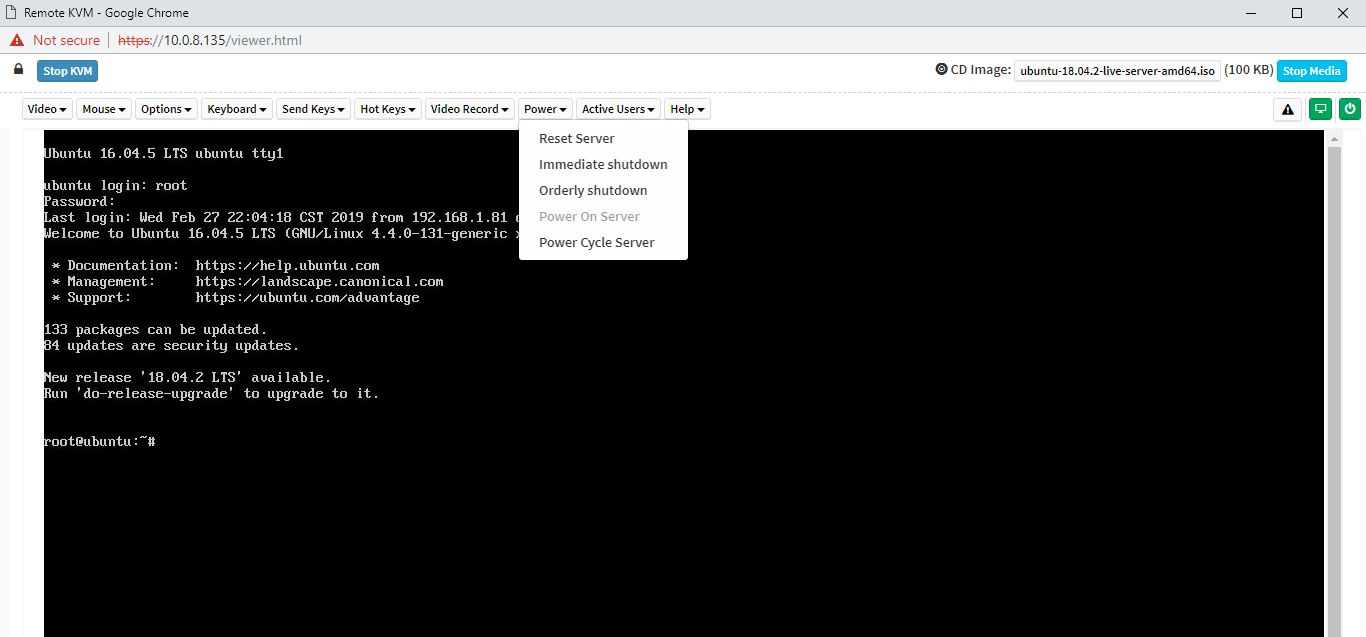
Another feature worth noting is the ability to set BIOS settings via the web interface. That is a feature we see in solutions from top-tier vendors like Dell EMC, HPE, and Lenovo, but many vendors in the market do not have.
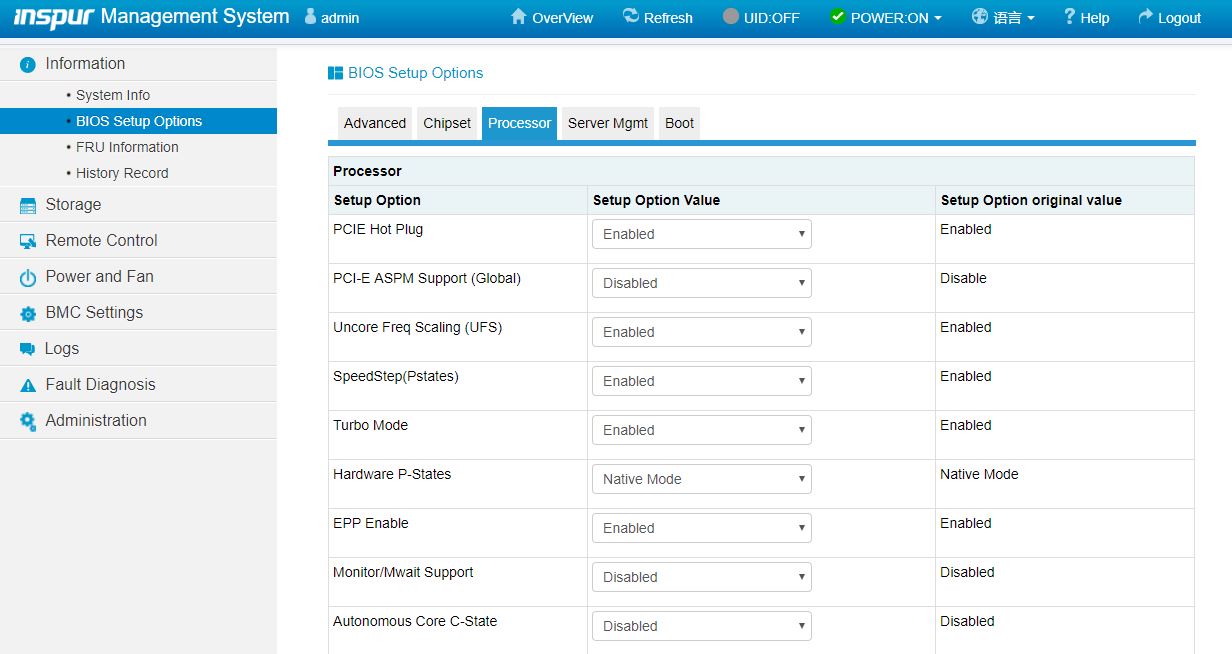
Another web management feature that differentiates Inspur from lower-tier OEMs is the ability to create virtual disks and manage storage directly from the web management interface. Some solutions allow administrators to do this via Redfish APIs, but not web management. This is another great inclusion here.
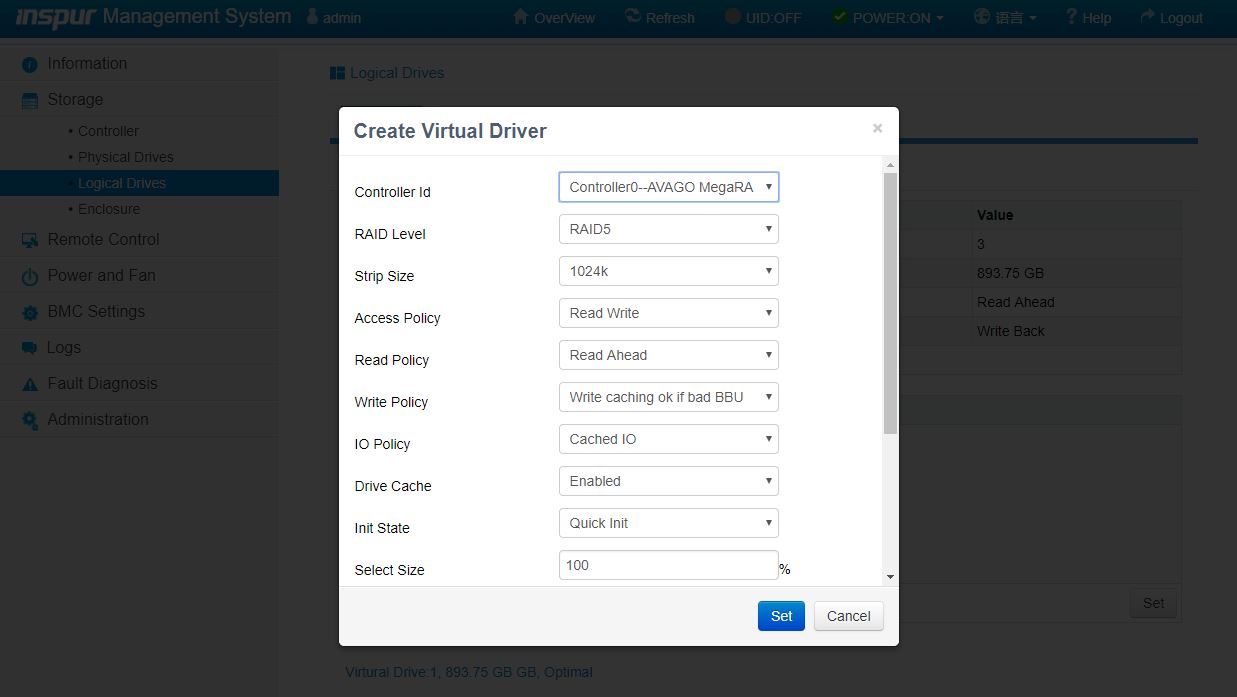
Based on comments in our previous articles, many of our readers have not used an Inspur Systems server and therefore have not seen the management interface. We have an 8-minute video clicking through the interface and doing a quick tour of the Inspur Systems management interface:
It is certainly not the most entertaining subject, however, if you are considering these systems, you may want to know what the web management interface is on each machine and that tour can be helpful.
In addition to the web management interface, we have also covered Inspur AIStation for AI Cluster Operations Management Solution.
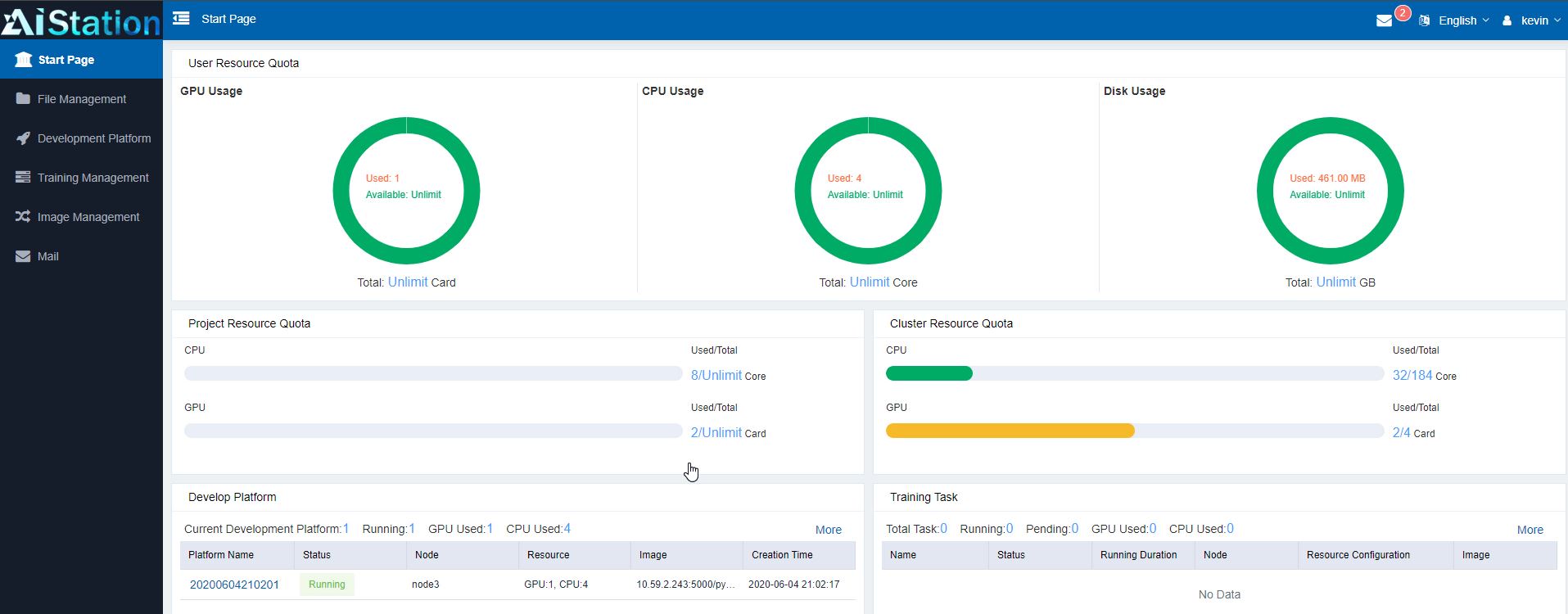
Inspur has an entire cluster-level solution to manage models, data, users, as well as the machines that they run on. For an AI training server like this, that is an important capability. We are going to direct you to that article for more on this solution.
Next, let us discuss performance.
Performance
One of the biggest areas that manufacturers can differentiate their 2U4N offerings on is cooling capacity. As modern processors heat up, they lower clock speed thus decreasing performance. Fans spin faster to cool which increases power consumption and power supply efficiency.
STH goes to extraordinary lengths to test 2U4N servers in a real-world type scenario. You can see our methodology here: How We Test 2U 4-Node System Power Consumption.
Inside this configuration, what we are testing for is the ability of these dense 2U4N systems to keep processors cool compared to baseline 1U systems. In previous generations, one issue many systems had was that there would be wide performance deltas between 1U1N (1U 1-node) and 2U4N (2U 4-node) platforms because processors would throttle under load. An ideal result is that a 2U4N platform matches the performance of 1U1N performance since that would mean that cooling is sufficient to allow processors to run at their maximum turbo frequencies.
We loaded the Inspur i24M6 with a few configurations to see the performance compared to our average 1U system performance. We then ran one of our favorite workloads on all four nodes simultaneously for 1400 runs. We threw out the first 100 runs worth of data and considered the 101st run to be sufficiently heat soaked after days of testing. The other runs are used to keep the machine warm until all systems have completed their runs. We also used the same CPUs in both sets of test systems to remove silicon differences from the comparison.
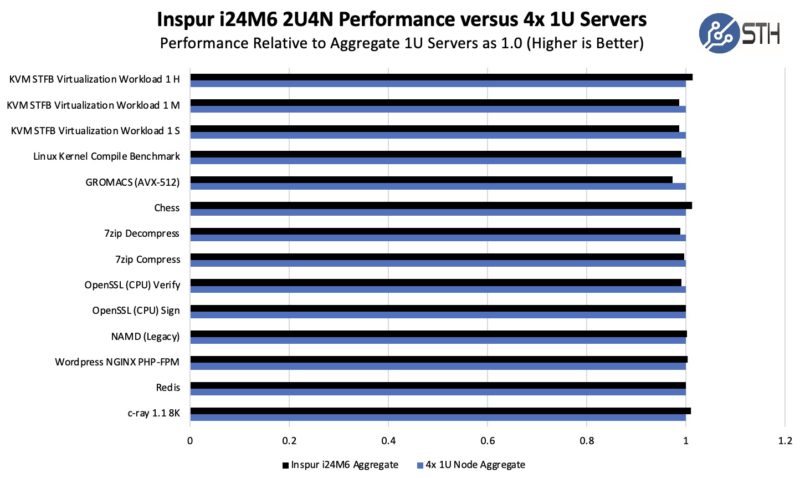
Here we see that generally the Inspur i26M6 performs very well and is generally +/- 2% of the 1U servers. Perhaps the biggest delta is the GROMACS AVX-512 workload that is known for generating heavy heat loads and power consumption, but even then the delta was only ~2.7%.
This is an extraordinarily labor-intensive process, but it is done to eliminate variables. With these results, it seems as though the Inspur i24M6 is running CPUs very close to their full performance levels without significant throttling.



